In Taiwan, Tzu Chi songs have emerged as a distinctive expression within the modernization of Buddhism during the 20th century. These melodies extend the tradition of Buddhist chants and the concept of propagating the Dharma through sound, drawing inspiration from Master Hong Yi's integration of Western musical techniques into new Buddhist compositions. More than just music, these songs serve as a medium to interpret classic Buddhist principles, embodying Tzu Chi's spirit of great love and humanistic care, and connecting people to profound teachings in an accessible way.
The Genesis of Compassionate Melodies
Tzu Chi songs are deeply intertwined with the organization's history, reflecting the people, events, and emotions that have shaped its journey. Mei-Ling Chen (陳美玲), editor of “50 Years of Tzu Chi Songs,” notes that the songs originated from the principle: “Where there is suffering, there is the sound of Tzu Chi's songs.” In the early days, Tzu Chi commissioners often spontaneously composed lyrics during group activities and gatherings, giving rise to this unique musical approach to learning the Dharma.
The first songs specifically composed for Tzu Chi appeared in 1982. By 1990, a wave of talented musicians contributed to a growing repertoire, creating pieces that offered solace to those in distress, bore witness to historical moments, brought harmony to a turbulent world, and transmitted the Dharma. Master Cheng Yen emphasizes that every Tzu Chi song carries a story and a teaching. “The Dharma can be sung, just like reciting sutras or chanting verses,” she explains. “Singing good songs is like reciting sutras; every Tzu Chi song contains the Dharma. Through singing, we can purify our hearts, guide ourselves to sing good songs and speak good words, and also inspire others to do good deeds.”
Songs of Dedication and Service
Tzu Chi songs embody the aspirations and actions of Tzu Chi volunteers, serving as a modern form of Buddhist chant that conveys the profound vows to work for Buddhism and all living beings. These compositions not only transmit Buddhist principles and purify hearts but also foster a collective spirit of goodwill.
In 1982, Master Hsiao-Yun (曉雲法師) was deeply moved by Master Cheng Yen's unwavering determination to establish the Hualien Tzu Chi Hospital. This inspiration led her to compose the “Tzu Chi Anthem”, which articulates the great compassion and vows of Bodhisattvas in the human world. This was the first dedicated song for Tzu Chi, sixteen years after its founding. Master Hsiao-Yun later also composed the Tzu Chi Hospital song.
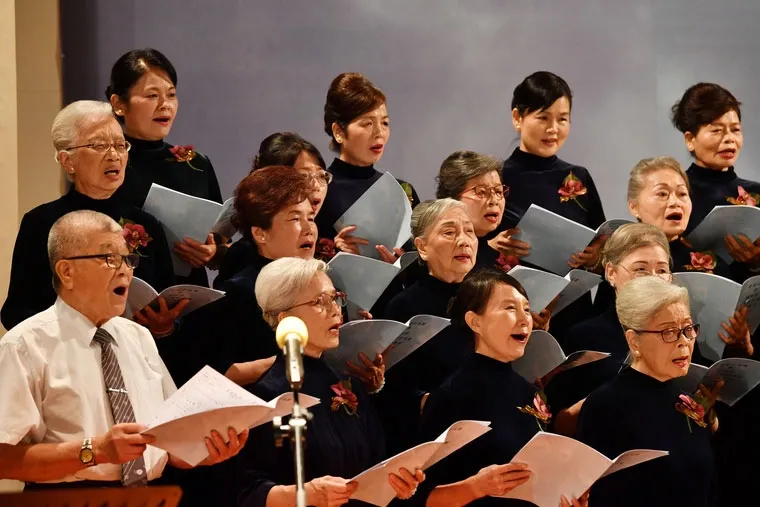
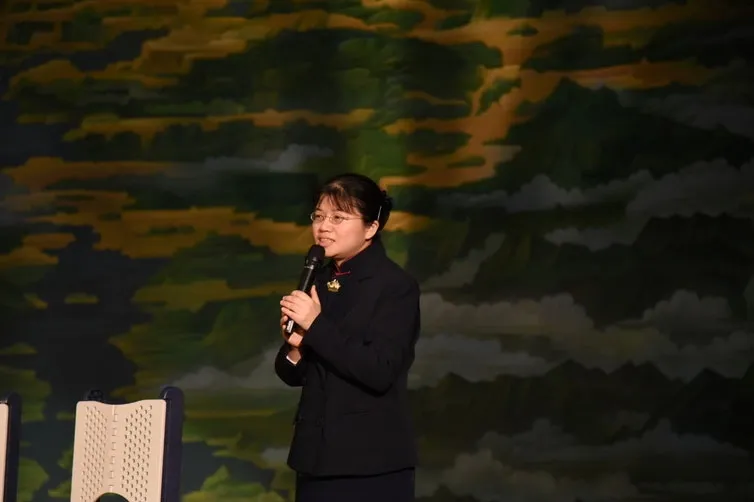
LEFT: Tzu Chi songs, a unique feature in the modernization of Taiwanese Buddhism, blend traditional Buddhist chants with Western musical techniques to interpret Buddhist principles and express great love and humanistic care. | Photo: Ming-Chung Yang (楊明忠). RIGHT: Mei-Ling Chen (陳美玲), editor of "50 Years of Tzu Chi Songs," shares that Tzu Chi songs originated from the idea that "where there is suffering, there is the sound of Tzu Chi's songs." | Photo: Kun-Hsiang Wu (吳昆祥)
Master Hsiao-Yun visited the Jing Si Abode in June of the same year. Witnessing the Abode’s adherence to the principle of “a day without work is a day without food” and Master Cheng Yen’s tireless efforts to raise funds for the hospital, she was profoundly impressed by the extraordinary resolve required to achieve such a grand aspiration. During her meditation after morning prayers, the image of Master Cheng Yen’s slender figure, tirelessly working for suffering beings, came to mind. This led her to write the lyrics: “Tzu Chi’s origin, Jing Si where I abide. Tzu Chi’s volunteers are spread far and wide...” The Tzu Chi Anthem subsequently became the opening anthem for communal practice sessions.
In 1988, senior volunteer, Sister Jing Yang (靜暘) adapted the popular song “I Am a Little Bird” into the “New Commissioner’s Song” (新委員誕生歌). Its lyrics, "I am born into the Tzu Chi family in this life, following Master Cheng Yen with the Buddha's heart as my own, and Master Cheng Yen's aspirations as my own, diligently progressing,” conveyed the spirit of Tzu Chi volunteers. This song inspired continuous effort and strengthened the unity among commissioners, shaping the unique culture of early Tzu Chi songs.
Healing Hearts, Inspiring Minds
The melodies of Tzu Chi also chronicle the development of its medical and educational missions. In 1989, following the passing of Dr. Shih-Mien Tu (杜詩綿), the first superintendent of Hualien Tzu Chi Hospital, his friend Fu-Yu Lin (林福裕) composed “Boundless Buddha's Light” (佛光無邊) for the memorial service. In 1999, with Master Cheng Yen's approval, the song was renamed “Great Love Without Boundaries” (大愛無邊), symbolizing the enduring spirit and belief in great love.
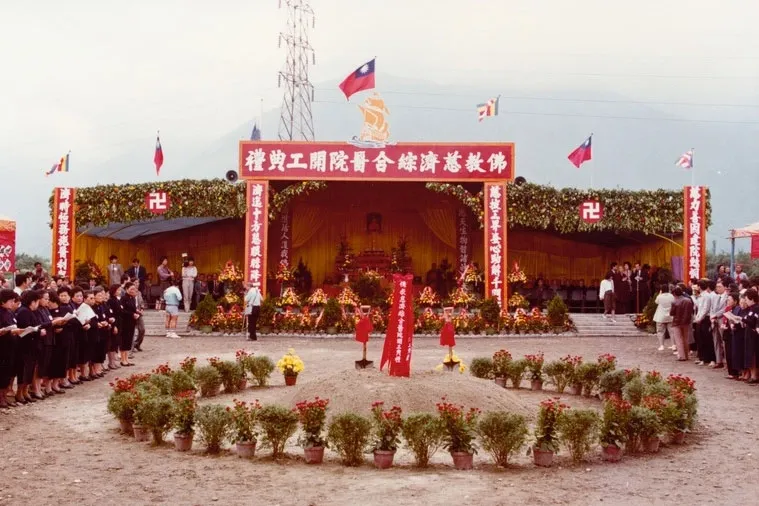
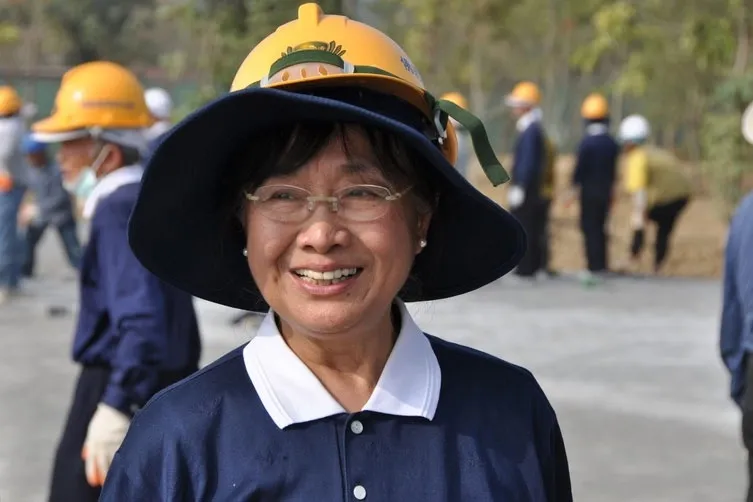
LEFT: The Tzu Chi Anthem, composed by Master Hsiao-Yun in 1982, expresses the great compassion and vows of Bodhisattvas in the human world, inspired by Master Cheng Yen's determination to build the Hualien Tzu Chi Hospital. | Photo: Master De Yu (釋德雨). RIGHT: Sister Jing Yang adapted "I Am a Little Bird" into the "New Commissioner’s Song," inspiring diligence with the spirit of "Buddha's heart, Master's aspirations" and fostering unity among commissioners. | Photo: Jung-Wei Liang (梁榮為)
On September 17, 1989, the Tzu Chi Nursing College held its inaugural opening ceremony. Master Cheng Yen’s original intention for establishing the college was to provide educational opportunities for indigenous students in eastern Taiwan and to cultivate compassionate nursing professionals. The college anthem, with lyrics by Hsin-Chiang Kao (高信疆) and music by Chieh-Yung Shih (史擷詠), was sung at the ceremony and later incorporated into Tzu Chi sign language performances.
In 1994, Tzu Chi established its College of Medicine, the precursor to the current Tzu Chi University. The Tzu Chi University anthem, composed by Shou-Chuan Lee (李壽全) with lyrics by Tong Li (賴西安), includes a particularly moving passage: “We vow to empathize, wishing all beings peace, relieving their worries, pain, and wounds; we vow to treat all beings as closest kin, healing illness, healing hearts, sharing peace.”
Shou-Chuan Lee also composed the lyrics and music for the Tzu Chi song Crossing Mountains and Ridges (盤山過嶺). He was deeply moved by Master Cheng Yen’s account of the challenges faced during the construction of Hualien Tzu Chi Hospital. The song's lyrics were inspired by Lee’s childhood memories of growing up in a mining area in Jiufen, where sick neighbors had to be carried on makeshift stretchers or take a train to distant hospitals. This experience shaped the opening scene of Crossing Mountains and Ridges.
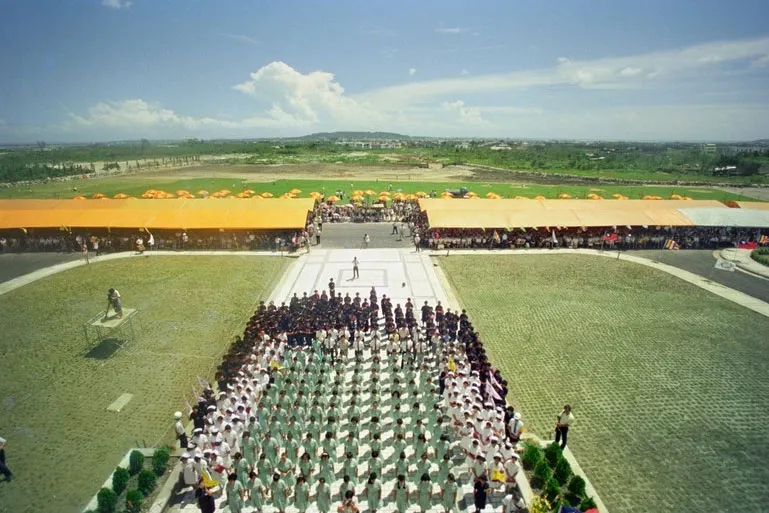
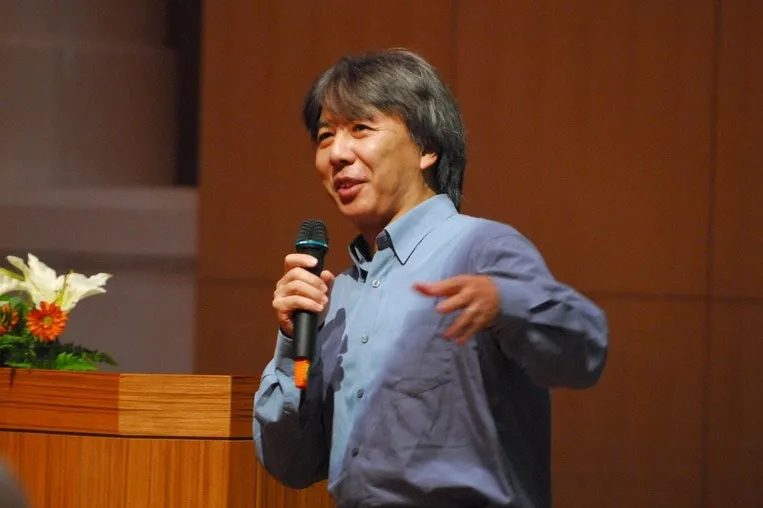
LEFT: The inaugural opening ceremony of Hualien Tzu Chi Nursing College, which enrolled 107 students in its first class, was attended by many dignitaries, community members, and Tzu Chi volunteers. | Photo: Chin-Yi Huang (黃錦益). RIGHT: Shou-Chuan Lee shares how his inspiration for the song "Crossing Mountains and Ridges" came from his childhood, witnessing neighbors having to be carried over mountains or catching a train to reach hospitals. | Photo: Hsien-Huang Wang (王賢煌)
A particularly poignant part of the song is the repeated line, “Tzu Chi volunteers follow Master’s lead,” sung nine times. This signifies the disciples’ unwavering commitment to Master Cheng Yen’s aspirations and her expectations of them. Master Cheng Yen once shared that despite many advising her against building the hospital, she told her disciples: “Once I decided to build the hospital, I never looked back, because I believed you would follow closely behind.”
Dharma Through Modern Expression
Tzu Chi songs are often presented through musical sign language performances, transforming Buddhist scriptures into beautiful literary and artistic expressions. When sung in these dramas, the songs become a form of Dharma teaching, allowing both performers and audience members to internalize the teachings. This accessible approach to sharing the Dharma through sound creates a unique aesthetic of great love and compassion. Master Cheng Yen hopes that this method will resonate with modern sensibilities and attract more people to the Buddha's teachings.

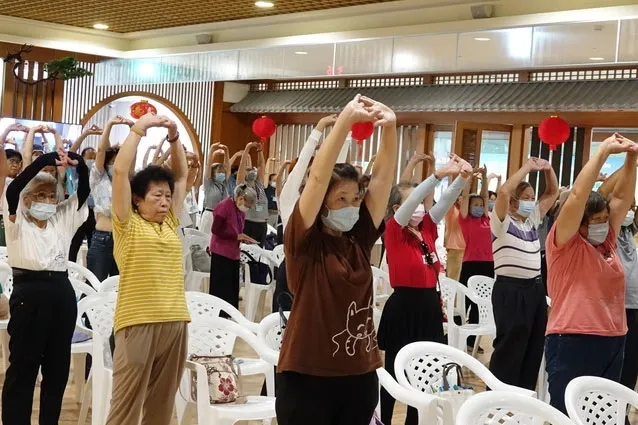
LEFT: utra adaptations include a combination of drama and sign language performances to help the audience better understand the Dharma teachings. | Photo: Mei-Fang Liu (劉美芳). RIGHT: Buddhist chanting in Tzu Chi blends traditional and modern approaches. Participants at Dongda Jing Si Hall in Taichung perform the "Vigorous Buddhist Chant Exercise." | Photo: Ming-Hsiu Liao (廖名修)
Long-time volunteer, Sister Ci Yue (慈悅) explains that Master Cheng Yen constantly considers how to connect with contemporary individuals and engage younger generations in learning Buddhist principles. While classical Buddhist chants appeal to older audiences, a modern approach is needed to reach younger people. Tzu Chi’s chants are not merely unique but represent a new way of “reading scriptures” by blending tradition with modern thought. By integrating the Dharma into daily life and worldly affairs, these songs aim to inspire compassion and wisdom within each person, creating a collective “worldly sutra” that safeguards the Buddha-Dharma for the benefit of all living beings.
On Taiwan’s east coast,
the sun rises from the sea to kiss the mountains first.
Few live here in the “back of the mountains”
where a hospital is desperately needed.
Locals trek through the mountains,
crossing ridge after ridge, and all for what?
When loved ones fall ill in the dead of night,
family must carry them for miles for medical aid.
Unable to bear seeing such suffering,
Master set up a free clinic to help save lives.
It ran twice a week, for fifteen years.
Building a hospital was her deepest wish.
Looking out to the fields a fish pond lies,
where the cows graze on the lush green grass,
that is where we’ll build the hospital.
The estimated cost was six hundred million,
but we had only raised a twentieth of that.
For the sake of good medical care,
Master was determined to build the hospital.
Locals trek through the mountains,
crossing ridge after ridge, and all for what?
To help relieve suffering,
Tzu Chi volunteers follow Master’s lead...
When the hospital was finished,
it was the biggest in Eastern Taiwan,
and the cost surpassed eight hundred million.
Now everyone in Hualien knows,
they no longer have to leave home for medical aid.
Locals trek through the mountains,
crossing ridge after ridge, and all for what?
Volunteers accompany the medical team,
working together to cherish every life.
On Taiwan’s east coast,
the sun rises from the sea to kiss the mountains first.
Loving volunteers travel in teams to come serve at
the Tzu Chi Hospital,
safeguarding lives year after year.
Tzu Chi volunteers follow Master’s lead. (repeat x 9)
Written by Master De Shao (釋德劭)
Compiled by Hsiao-Ching Hsu (許曉菁), Chiu-Pei Kuo (郭秋佩), Yu-Lun Huang (黃于倫), Chen-Hsiu Huang (黃楨琇), Yu-Hsun Chen (陳予熏), Shu-Chen Huang (黃淑真), Editorial Team
Translated by Mindy Chen (陳敏理)
Source: 佛教音聲弘法的現代轉化──以慈濟歌曲為例



